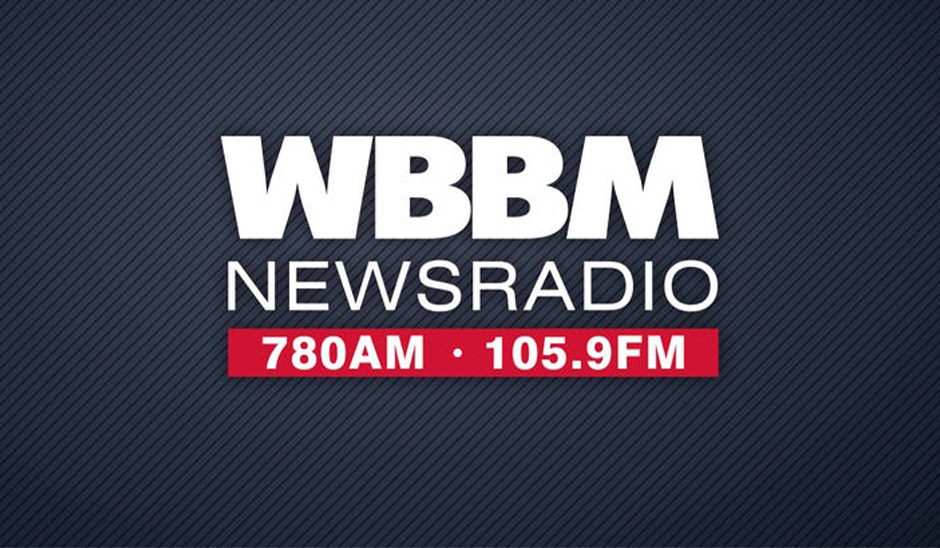
S&P 500 kicks off quarter with sixth straight record close in sight
July 1, 2021
Newsradio Chicago WBBM 7-1-21 Interview
July 1, 2021Trading app Robinhood files for initial public offering
U.S. stocks moved slightly higher Thursday, with the S&P 500 index extending its drive into record territory, helped by supportive economic data including a decline in jobless claims and a continuing expansion in manufacturing activity.
How are equity benchmarks trading?
- The Dow Jones Industrial Average DJIA, 0.38% was up 112 points, or 0.3%, at 34,614.
- The S&P 500 SPX, 0.52% rose 21 points, or 0.5%, to 4,319.
- The Nasdaq Composite COMP, 0.13% was up 15 points, or 0.1%, to 14,519.
On Wednesday, the S&P 500 rose 5.70 points, or 0.1%, to end at 4,297.50 and mark its 34th record close of 2021, surpassing its total number of record closes in 2020; the Dow closed 210.22 points higher at 34,502.51, a gain 0.6%, bringing the blue-chip benchmark within 1% of its May 7 record close at 34,777.76. The Nasdaq Composite Index shed 24.38 points, or 0.2%, finishing at 14,503.95, marking its first decline in three sessions.
What’s driving the market?
The S&P 500 advance was led by cyclical stocks including energy, financials and industrials, and may post a sixth straight record close, while technology stocks lagged behind.
The economy is recovering from the COVID pandemic but there still are questions about the health of the jobs market and inflation that could derail the bullish sentiment supporting all three main stock indexes at or near records after their best first-half performances since 2019.
But the big item, in terms of gauging the pace of the economic recovery, will be Friday’s monthly payroll figures from the Labor Department. The Federal Reserve lately has stressed the need to reclaim lost jobs as key to healing the economy from COVID.
“The big question mark is going to be the participation rate and, even moreso, what the hourly wage costs are,” said Peter Cardillo, chief market economist at Spartan Capital, in an interview with MarketWatch.
“I don’t see the participation rate moving very much, with it likely being still stuck near levels of past few months. But we could see an increase in hourly wages, which could be a negative point for the bond market.”
See: The U.S. might have added 700,000 new jobs in June, but millions are still out of work
In economic data Thursday, first-time jobless claims fell to 364,000 last week from 411,000 the previous week, the Labor Department said. Economists had forecast a decline to 380,000. The data comes follows a better-than-expected update on private-sector employment from ADP on Wednesday.
“Not only did we print the lowest number since the pandemic began, but it also reverses the trend on misses that we’ve seen the past few weeks,” said Cliff Hodge, chief investment officer for Cornerstone Wealth, about the weekly dip in jobless claims. “Staying below that big-round-number [400,000] level could bolster confidence in risk taking during the dog days of summer,” he said.
Meanwhile, the IHS Markit final reading of its US. June manufacturing PMI was 62.1 compared with a flash estimate of 62.6, but unchanged from the May final reading. The Institute for Supply Management’s more closely followed manufacturing index slipped to 60.6% in June from 61.2% in May, coming in slightly below the Wall Street forecast. A reading of more than 50 indicates an expansion in activity.
“Make no mistake, this is an incredibly strong report where anything above 50 is in expansion territory,” said James Knightley, chief international economist at ING, in a note.
The production index rose to 60.8 from 58.5, which was a surprise in light of well-known supply chain issues, he wrote. The data showed manufacturers remain flooded with business, but are struggling in the face of labor shortages and supply bottlenecks.
“New orders continue to flood as indicated by a 66.0 reading while the backlog of orders continues to surge, although at a slower pace than in May,” Knightley said. “This means supplier delivery times continue to lengthen with customers increasingly desperate for stock as indicated by another steep contraction in their inventories.”
Construction spending fell 0.3% in May at a seasonally adjusted annual rate of $1.55 trillion, the U.S. Commerce Department reported. Economists polled by Wall Street Journal had expected a 0.5% increase.
Crude oil prices jumped Thursday as the Organization of the Petroleum Exporting Countries and its allies, a group known as OPEC+, met and were expected to see an agreement to lift output by around 500,000 barrels a day beginning in August. This rise is expected to be easily absorbed by the market as the global economy gains momentum. Chevron CVX, +1.45% stock gained more than 1.0%, making the stock one of the best performers in the Dow.
See: Oil could top $100 as commodities boom shifts away from China, says top economist
In other data Thursday, the U.S. budget deficit will hit $3 trillion for the fiscal year 2021, according to an estimate from the nonpartisan Congressional Budget Office. The gap would be 13.4% of GDP, the CBO said, the second-largest since 1945, reflecting the fiscal stimulus provided by Congress to support the economy’s recovery from the pandemic.
In public health news, the World Health Organization said a 10-week decline in new COVID cases in Europe has come to an end, with cases up 10% last week. WHO regional director for Europe Hans Kluge said the rise is due to relaxed restrictions and increased travel, the Guardian reported, and said a new wave will emerge if discipline isn’t maintained.
Which companies are in focus?
- Robinhood Markets, the trading app that saw its popularity surge during the pandemic, filed for an initial public offering on Thursday with plans to list on Nasdaq under the ticker symbol “HOOD.” The filing documents show the company has 17.7 million monthly active users and $81 billion in assets under custody
- McCormick & Co. shares MKC fell 0.1%, after the maker of spices and flavorings beat estimates for its fiscal second-quarter and raised guidance.
- MKS Instruments Inc. MKSI said Thursday it has reached an agreement to acquire Atotech Ltd. ATC, in a cash-and-stock deal with an equity value of $5.1 billion and an enterprise value of about $6.5 billion. MKS shares fell 3.8%, while Atotech stock was down 1.5%.
- Elliott Management has called on British pharmaceutical giant GlaxoSmithKline GSK, +0.88% to name new directors to its board and begin a process that will determine the future of its embattled CEO, Emma Walmsley.
- Krispy Kreme Inc. DNUT, +23.53% priced its initial public offering at $17 a share late Wednesday, significantly below their expected range of $21 to $24 a share. Shares made their debut Thursday on Nasdaq under the ticker symbol “DNUT” DNUT, rising 18.6%.
- Shares of Chinese electric car company NIO Inc. NIO, -4.38% fell 4.7%, after the company said it delivered 8,083 vehicles in June, up 116.1% from the same time a year ago.
- General Motors Co. GM, +0.22% shares were down 0.3% after the auto maker said it sold 688,236 vehicles in the U.S. in the second quarter, up 40% from pandemic-reduced levels a year ago.
What are other markets doing?
- The yield on the 10-year Treasury note TMUBMUSD10Y, 1.463% rose 3 basis points to 1.47%. Yields and debt prices move in opposite directions.
- The ICE U.S. Dollar Index DXY, 0.16%, a measure of the currency against at basket of six major rivals, was up 0.2%.
- The U.S. oil benchmark CL00, 2.04% was up 2.1% at $75.01 a barrel after a decision was delayed by OPEC+ on whether to further boost production beginning next month. Gold futures GCQ21, 0.27% rose $5.20, or 0.3%, to settle at $1,776.80 an ounce.
- In European equities, the Stoxx 600 Europe SXXP, +0.62% rose 0.6% and London’s FTSE 100 UKX, +1.25% advanced 1.2%.
- In Asia, the Shanghai Composite SHCOMP, -0.07% fell 0.1%, while Japan’s Nikkei 225 NIK, -0.29% was off 0.3%.
Mark DeCambre contributed reporting



